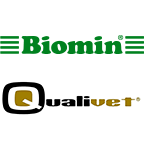Good manufacturing practices are essential to ensure a low cost-benefit ratio.
 05 Aug 2020
05 Aug 2020
Cereal milling is an extremely important factor affecting health and performance of pigs, as well as feed production cost. This article analyses how the choice between hammer mills and roller mills affect feed cost, feed particle characteristics, and feed digestibility. It also analyses productive performance of animals at different stages. Finally, it looks at the effect of particle size on the integrity of the pig’s stomach.
 Feed feeding cost in pig production represents 65-80% of the total cost of production (Jensen, 1976). This has led producers to take advantage of feed production techniques to maximise the utilization of raw materials.
Feed feeding cost in pig production represents 65-80% of the total cost of production (Jensen, 1976). This has led producers to take advantage of feed production techniques to maximise the utilization of raw materials.
Effectively managed, the increase in the cost associated to feed manufacturing translates into an improvement in pig performance.
Good manufacturing practices are essential to ensure a low cost-benefit ratio.
It is not enough to completely understand each processing method and their effects. It is also necessary to understand how feed processing affects:
Grains are the main ingredients of pig feed that need to be milled. Other ingredients are previously processed and reach the feed mill in acceptable conditions to be mixed.
There are two types of mills usually used to reduce the particle size of ingredients: roller mills and hammer mills.
Roller mills (Fig. 1A) reduce particle size through crushing and triturating the ingredient with acompressing force. This process produces a small proportion of fine material, resulting in a relatively uniform particle size.
Hammer mills (Fig. 1B) reduce particle size of ingredients through impact milling (Pfost, 1976), rendering particles of a more spherical shape, as well as a higher proportion of fine and pulverized particles. The final product has less uniform particle size (Koch, 2002). Previous studies have demonstrated that the lower uniformity in particle size rendered by hammer mills results in a higher angle of fall. This entails a lower fluidity of the product (Groesbeck et al., 2006).

Figure 1. Different types of mills.
Milling grains increases the cost associated with the production of feed. These costs include:

The initial cost of the equipment may appear high. However, depending on the type of mill, the yearly energy costs can exceed the cost of a new milling equipment. Understanding the variety of factors affecting the efficiency and production rate of milling can be beneficial to feed manufacturers.
The energy necessary to run a roller mill or a hammer mill during its utility life will be 10-20 times the cost of the machine (Heimann, 2014).
Some data has shown that the reduction of grain particle size leads to higher energy requirements and a reduction in the production rate (Gebhardt et al., 2018)
The velocity at which these factors change can be affected by:
Roller mills and hammer mills have different operative costs and capital investments.
Considering the negative effects of particle size reduction on milling efficiency, it is important to continue investigating whether these loses are justified by an improvement in animal performance.
The idea of reducing grain particle size before feeding pigs emerged in the 1930s
These experiments laid foundations for future studies looking at optimising the application of milling in the production of pig feed.
Previous studies had already demonstrated the improvement in nutrient digestibility thanks to a reduction in maize particle size (Lawrence, 1967; Giesemann et al., 1990). However, recent studies have shown differences in digestibility of particles of different size, depending on the type of mill used to grind the maize.
The improvement in feed efficiency in pigs when reducing feed particle size has been well documented in pigs. However previous studies revealed a higher variability regarding optimum particle size.
The growth rate in response to the reduction in particle size is more variable in weaner piglets. At that stage, the weight gain was lower when the maize fraction of the diet was finely ground (approx. 325 μm).
Weaned piglets are sensitive to diet palatability and a predictable reduction of feed intake was frequently observed in cases when particle size was lower than 500 μm.
Although the reduction of grain particle size can improve performance of pigs, it can have negative effects on gastric integrity. Certain situations could lead to an increment of ulceration in the pars oesophagea (Fig. 2) of the pig stomach (see our article The effect of feeding on the development of gastric ulcers in pigs).

Figure 2. Diagram of the regions of the pig stomach.
This article has been previously published on nutriNews Spain, with the title “Cómo la molienda de cereales afecta la eficiencia y la salud en cerdos”
Subscribe now to the technical magazine of animal nutrition
AUTHORS

Hybrid Rye Potential in Laying Hen Feed Rations
Gwendolyn Jones
A day in the life of phosphorus in pigs: Part I
Rafael Duran Giménez-Rico
Use of enzymes in diets for ruminants
Braulio de la Calle Campos
Minerals and Hoof Health in the Pregnant Sow
Juan Gabriel Espino
Impact of Oxidized Fats on Swine Reproduction and Offspring
Maria Alejandra Perez Alvarado